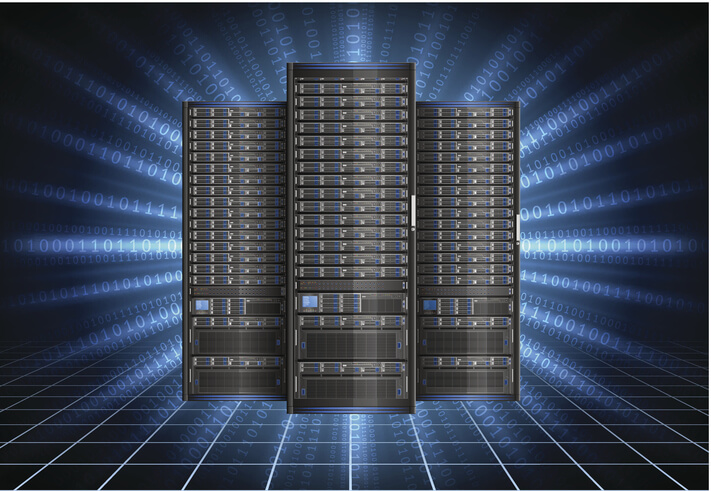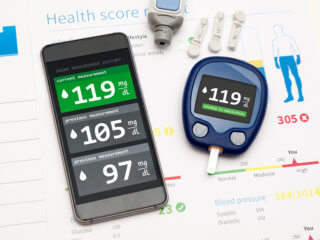In spite of all scientific advancements, health sector continues to be one of the messiest, inefficient, and expensive areas in the world. The uncertainty, inadequate measures, and decisions prone to human error bemoans doom dearly, and radical changes like using supercomputer in the digital health sector are essential to keep it at pace with today’s fast changing world.
Supercomputers and servers are playing a significant role in managing the new waves of digital health technologies. With the advent of a more rapid computing system, machine learning and computer science have taken a monumental leap over past two decades with an increased data access and novel analytical approaches. Interpretation of big, complex and unstructured data is now possible through supercomputers, and it allows processing of big data in medical science.
Recognition of complex disease and health pattern may help us all receive faster and better medical. Biomarker data from RNA/DNA analysis allows us to predict disorders way before its onset. However, the large data it encodes requires equally developed supercomputers to process and analyze using faster algorithms. The biomarkers and metabolic data analysis also provide valuable hints for oncological studies (for example, we can predict breast cancer in advance) and predict genetic disorders (congenital or recessive). It also helps to assist doctors for evidence-based diagnosis (which saves up time from manual data crunching and lowers the cost of medical facilities). The data from clinical trials, patients, experimental lab notes (which helps to redo and verify the preliminary results again), toxicology reports are used for predictive analysis using parallel computing and better servers.
The Radiology and Nuclear medicine department face massive challenges regarding extensive clinical data generated and accumulated. Without compromising quality, supercomputers are the only way we can pave the way for big data analysis required for this function.
| Recommended for you | |
| Deep learning in health care | |
| Big data in medicine | |
| Artificial Intelligence for beginners |
Before we begin, let’s take a brief glimpse into types of data-structured and unstructured.
Medical data are often unstructured. By that, we mean it is without proper tabulation, and therefore cannot be put into clinical use by a simple algorithm. The deep learning algorithms have enabled scientists to tabulate data into usable form, which can help to diagnose faster and better. Automating labor-intensive process using ultra-fast processors equipped in supercomputers allow a reduction in time consumption, also, to rise in accuracy and reach of medical facilities and better tracking. Parallel programming and data transfer possible through supercomputers and fast servers allow simulations carried out in astonishing speed quickening up the drug discovery process which requires multiple tests, data gathering and reorganization.
Take, for example, IBM Watson. Oncologists spend day and night fighting relentlessly against this widespread terror called cancer. However, they are developing new methods to combat this disease. Cancer genomics is a highly complex biological science – and it’s a science that is advancing extremely rapidly. The core of cancer biology lies in bioinformatics-which, in turn, depends on massive data analysis.
With nearly 8000 papers published every day, it is possible to miss essential data relevant to a particular cancer research. Watson is tireless, and it can keep up with the enormous amount of data pouring through experiments and clinical trials throughout the world. Also, it’s not just one-disorder targeted. The system allows for multiple diagnoses, which cuts down time and expenditure by tenfold. Also, servers make cloud computing and sharing easy and accessible, which drive forward research in various parts of the world.
Usage of the algorithm also removes the bias induced due to human judgment. Supercomputers, with their tremendous analytic speed, can observe the previously unseen pattern and connections which can help in generation of new hypothesis and original analysis for preventive measures against diseases and disorders.
Telecompanies like Boston-based American Well to San Francisco start-up Doctor On Demand literally bring healthcare to your doorstep. You can immediately consult doctor or consultant through phone or video app, which is better served from a better server. Your vital signs can be taken with the help of medical devices directly uploading your data online, making diagnosis easier without a visit. One New York startup, Nomad Health, pairs doctors with hospitals in need of physicians in three specialties—internal medicine, emergency medicine, and psychiatry.
Ride-sharing giants Uber and Lyft have started new programs like Circulation (by Uber), which integrates medical records into Uber’s API so that nurses, caregivers, and hospital transportation coordinators can more easily schedule rides for patients and accommodate their needs. A better data sharing platform has made this possible.
And what about AI and deep learning that could help doctors figure out a patient’s disease simply by analyzing a face—no scans or testing required? Boston-based startup FDNA is trying to achieve exactly that with its Face2Gene platform. The firm has put together a photo database of people with more than 2,000 rare genetic diseases. Doctors can snap pictures of their patients and upload them to FDNA’s mobile app, which then spits out a list of disorders they might have by analyzing important facial features associated with those conditions (the tech is not a diagnostic tool, but rather a way to narrow down the list of possible genetic suspects). And the company hopes the system can drastically improve the “diagnostic journeys” that those with rare diseases typically face: Such patients, on average, are seen by seven doctors before the correct diagnosis is made. Again, cloud computing and supercomputers had largely contributed in this arena by speeding up the process and find out patterns (easily ignored or unnoticed earlier).
AI using supercomputers have also accelerated natural screening process for drug discovery, and hopefully, shortly, the entire health sector shall revolutionize by digitalization.
Image credit: www.istockphoto.com

















